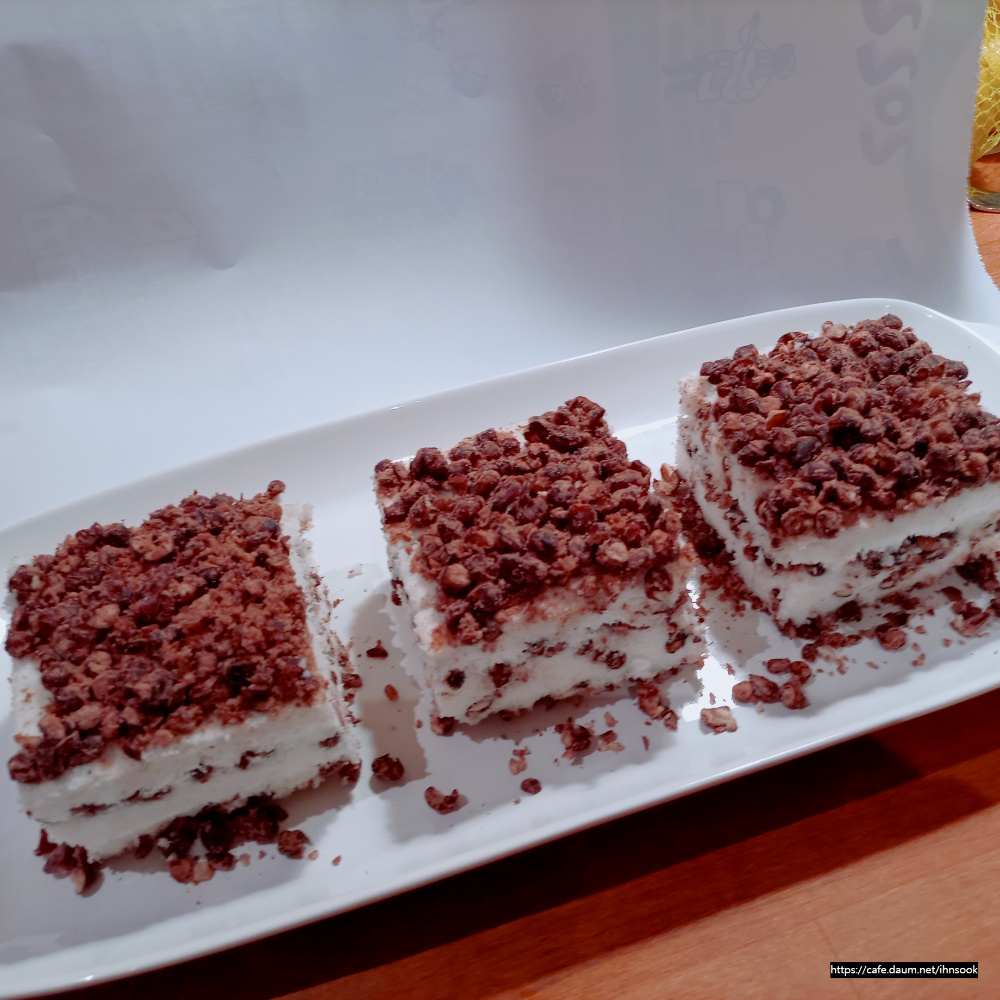My Daughter’s First Steamed Rice Cake: Red Bean Paste Topped Seolgi
My Daughter’s First Homemade Red Bean Paste Seolgi Rice Cake

After mastering how to make red bean paste last time, my younger daughter is now ready to take on the challenge of making Seolgi rice cake using her homemade filling! This is the very first rice cake recipe I’m teaching her. Join us in creating a sweet and memorable experience together.
Rice Cake Ingredients- 900g Frozen Rice Flour (moist type recommended, e.g., from Korean markets)
- 3/4 Tbsp Salt
- 9 Tbsp Sugar
- 3 cups Red Bean Paste
- 7 Tbsp Water (adjust as needed based on rice flour consistency)
Cooking Instructions
Step 1
The moist rice flour I’m using today comes frozen in 2-pound (approx. 900g) bags, commonly found in Korean grocery stores. (If you’re outside Korea, look for similar packaging.) Please check if your rice flour is already salted, as this one had a slight seasoning. Knowing this will help you adjust the salt later.

Step 2
Now, let’s add water to the salted rice flour to form the dough. Most commercially available rice flours for떡 (tteok) are pre-seasoned these days, so always read the package label carefully. The key to a perfect Seolgi is getting the water amount just right! In fact, if you can master a plain white Baekseolgi, you can make any type of Seolgi. For 900g of rice flour, I added 7 tablespoons of water, and it resulted in a nicely moist dough that clumps together well. (Note: Generally, 1kg of rice flour uses about 9-10 Tbsp of water, but this can vary based on the flour’s moisture content and the ambient humidity.)

Step 3
Sift the mixed rice flour through a fine-mesh sieve. Use your whole palm to gently press and break up any lumps as you sift, ensuring a fine, even texture. While the flour is being sifted, bring the water in your steamer pot to a rolling boil. Once the water is boiling, add the sugar to the sifted rice flour and mix lightly. Adding sugar too early can make the cake texture coarse, so it’s best to mix it in just before steaming.

Step 4
Prepare your steamer setup in advance. Line the bottom of the steamer basket with parchment paper, place the sieve (the perforated layer) on top, and finally, position your round cake mold (like a mousse ring) onto the sieve. This setup prevents the cake from sticking to the bottom and helps maintain a clean shape.

Step 5
Today, we’re making a ‘Gomeul Tteok’ (cake with toppings) using red bean paste. First, spread 1 cup of the prepared red bean paste thinly over the bottom layer inside the sieve. If you prefer a plain Baekseolgi without any topping, simply skip this step and add the rice flour directly.

Step 6
Now, let’s layer the rice flour and red bean paste. Add 1 cup of red bean paste, followed by 3 cups of rice flour, then another 1 cup of red bean paste, and 3 cups of rice flour. Finish by topping with the last 1 cup of red bean paste. After layering, gently wiggle the cake mold left and right. This creates a small gap of about 2mm between the rice flour and the mold, which makes it easier to unmold the cake once it’s cooked and has expanded. Any leftover rice flour can be added to the empty spaces in the steamer basket to be cooked along with the cake – no waste!

Step 7
Ensure the water in the steamer pot is boiling vigorously. Place the prepared rice cake onto the steamer. Once you see steam rising, steam the cake for 20 minutes. After 20 minutes, reduce the heat to low and let it steam for an additional 5 minutes to allow it to ‘rest’ and finish cooking through. Your delicious Seolgi cake is ready!

Step 8
This is the very first rice cake my daughter has ever made! She followed the instructions so well, and seeing her complete it filled my heart with pride and joy. This cake, made together, feels extra special.

Step 9
The scattered red bean paste on top adds a delightful sweetness and nutty flavor, enhancing the overall taste of the rice cake.

Step 10
My daughter enjoyed making this so much that she says she wants to eat only rice cakes for the next few days! She commented, ‘I wish I had made it sooner now that I know it’s this easy.’ Seeing her enthusiasm, I think we’ll try making other types of rice cakes together soon. It’s a great reminder that mastering Baekseolgi truly unlocks the ability to create any kind of rice cake dessert!




